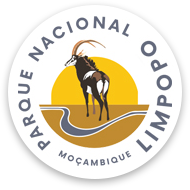The fences might be down, but the incident is being cited as an example of how security has actually been improved
A joint operation between Kruger National Park rangers and Mozambican police has led to the arrest of two notorious rhino poachers, and the success of their co-operation is being held up as an example of how the Great Limpopo Transfrontier Park (GLTP) has improved rather than compromised security.
The poachers, whose four-wheeldrive vehicle has been confiscated, are suspected of being the leaders of a poaching gang that has killed several Kruger Park rhinos. They are in custody in Mozambique while their accomplices are being sought. The incident was reported at a meeting of the board of the World Conservation Union (IUCN) at Kruger Park’s Mopani camp this week. It was presented as proof of how the link-up between South Africa’s flagship reserve and Mozambique’s Limpopo Park, as part of the GLTP, has unproved security, despite the law enforcement establishment’s reservations.
It was the first time the IUCN board met away from the 59-year-old organisation’s headquarters in Switzerland and was at the behest of Valll Moosa, South Africa’s former environmental affairs and tourism minister, who was elected president of the IUCN, the world’s most powerful conservation partnership, three years ago.
The reports of the South African parks managers about the country’s accomplishments, particularly with respect to the transfrontier park, was appreciated by the world’s top environmentalists at the meeting, but spokesmen for South African National Parks (SANParks) made no secret about the strain between them and national security personnel over the removal ofboundary fences between the parks.
Dr David Mabunda, the chief executive of SANParks, told the meeting that the national police commissioner [Jackie Selebi] feared that the removal of the fences would enable more people, posing as tourists, to enter South Africa illegally through border posts such as the new Giriyondo facility between the two parks.
Mabunda conceded that that might be so, but, on the other hand, people were coming in illegally anyway. But one advantage of the new situation was that they did not light fires where they stopped to rest, thereby setting off runaway veld fires, as used to happen often.
Also, the danger of predators such as lions becoming used to the taste of human flesh was reduced. This used to happen when illegal immigrants from Mozambique would slip through the security fence and fall prey to dangerous animals.
Dr Danie Pienaar, the head of SANParks’ scientific services, said that rhino poaching, in particular, had declined considerably since the establishment of a park management system on the Mozambican side from Kruger. He couldn’t accept the argument that security was compromised by the removal of the boundary fence.
Vehicle smuggling is a known concern of law enforcement agencies, which he was probably referring to when he said: “All you need is a bolt cutter and you’re through.”
On the problem of illegal entry, he said the difference was that people were now crossing the border in taxis rather than walking.
“The fact is, we can’t stop illegal immigration.”
Freek Venter, the head of Kruger Park’s conservation services, told the international environmentalists about the arrest this month of the two rhino poachers. He described it as an example of how the creation of a good intelligence system – with the help of local communities and close co-operation between the security personnel of Kruger Park and Mozambique – was benefiting the joint park system and its animals.
The poachers were arrested in Mozambique outside the transfrontier park in an area along the southern section of Kruger Park. It adjoins community land wedged between newly established private reserves.
Venter said later in an interview that the rhinos strayed from Kruger through openings in the fence, in many cases made by Mozambicans entering the park to gather wood to make charcoal, which they sold. But the information that led to the poachers’ arrest was gained from these people.
He said the department of home affairs bad helped to promote security co-operation between the two countries by giving members of Kruger Park’s special operations unit permits to cross the border. This allowed them to pursue the poachers quickly and arrest them with the help of the Mozambican police, with whom they enjoyed excellent co-operation.
He thought the security situation in the south of Kruger, outside the transfrontier park, would improve once a proper system of private and community reserves were established on the Mozambican side to form a buffer between the Mozambican interior and Kruger Park.
Leon Marshall, Sunday Independent

